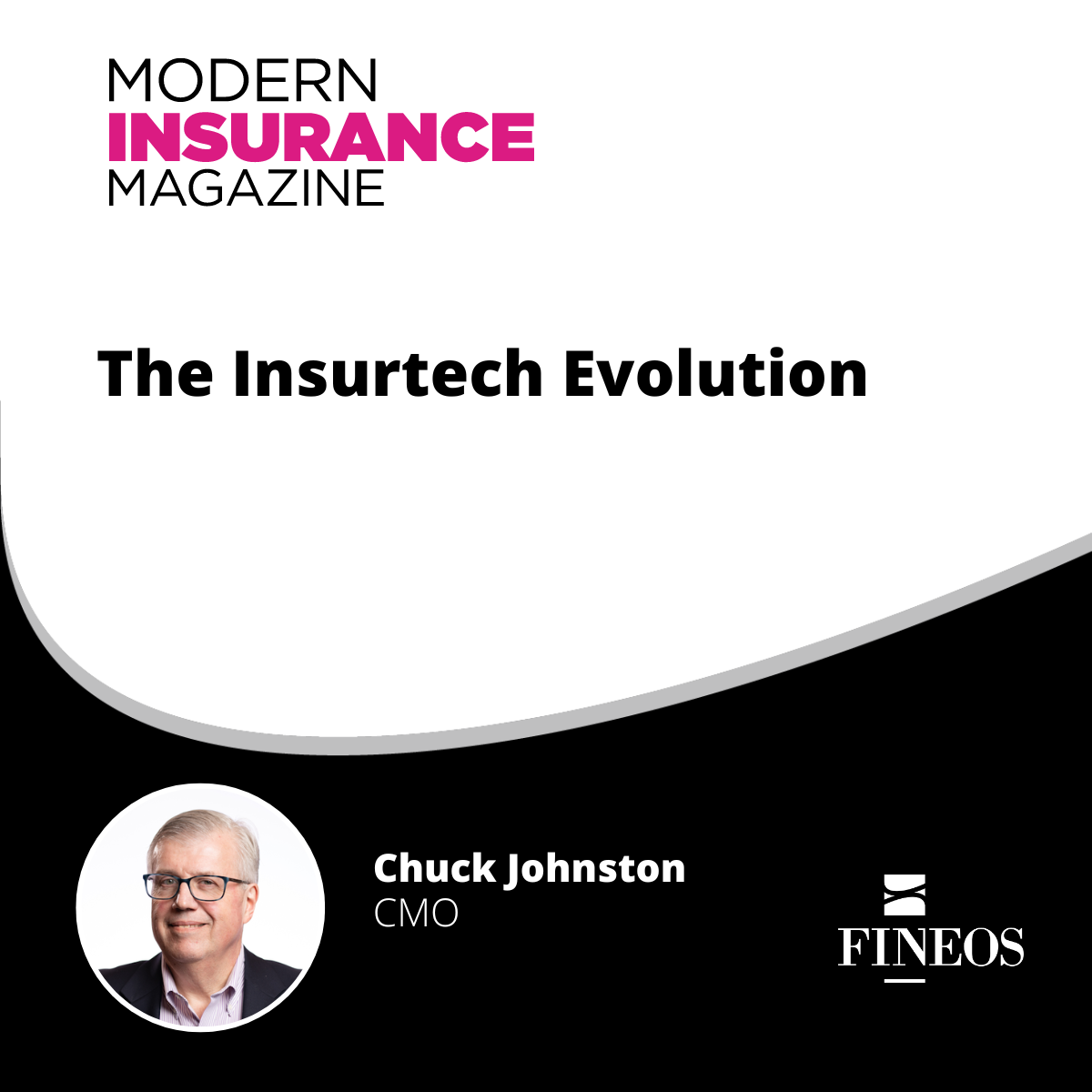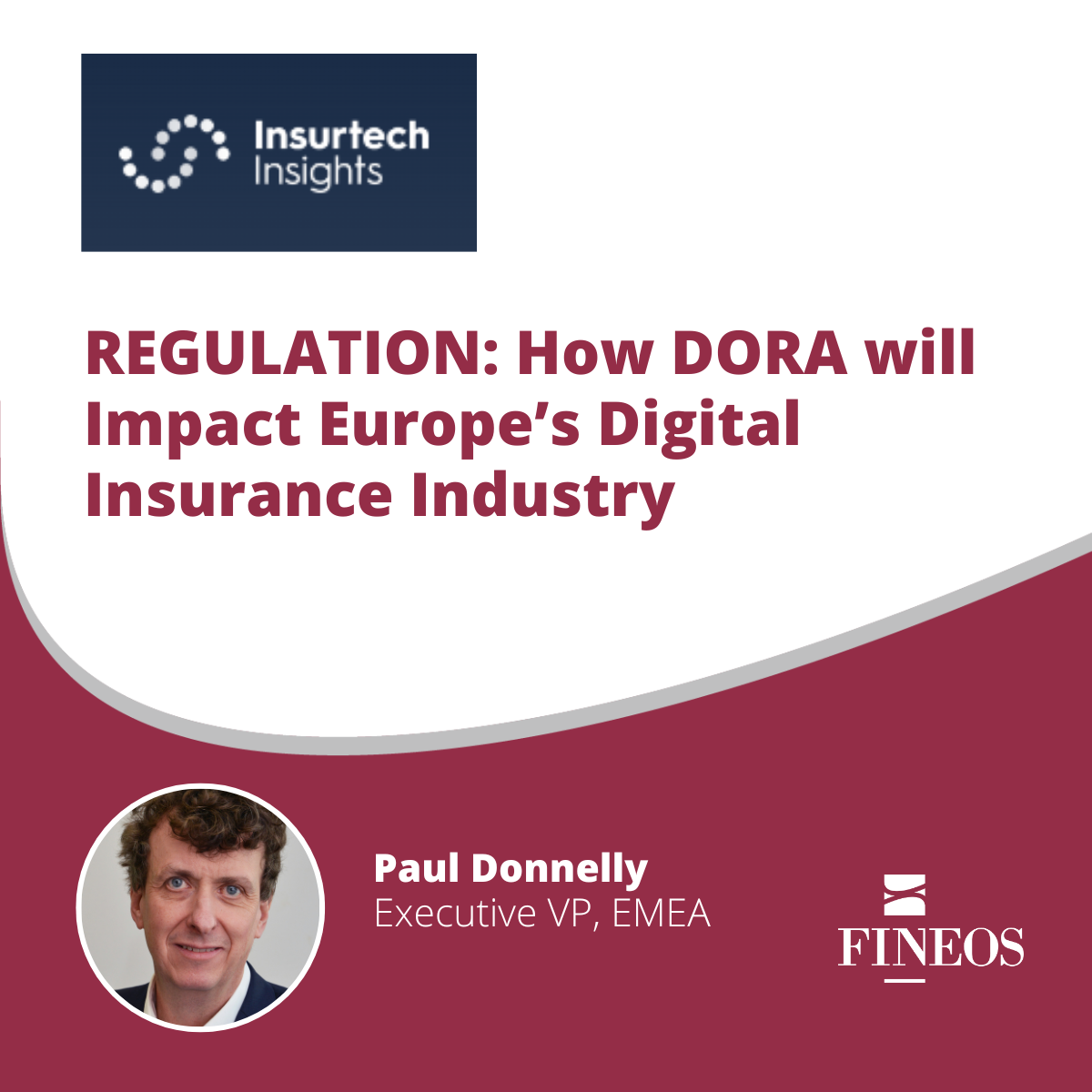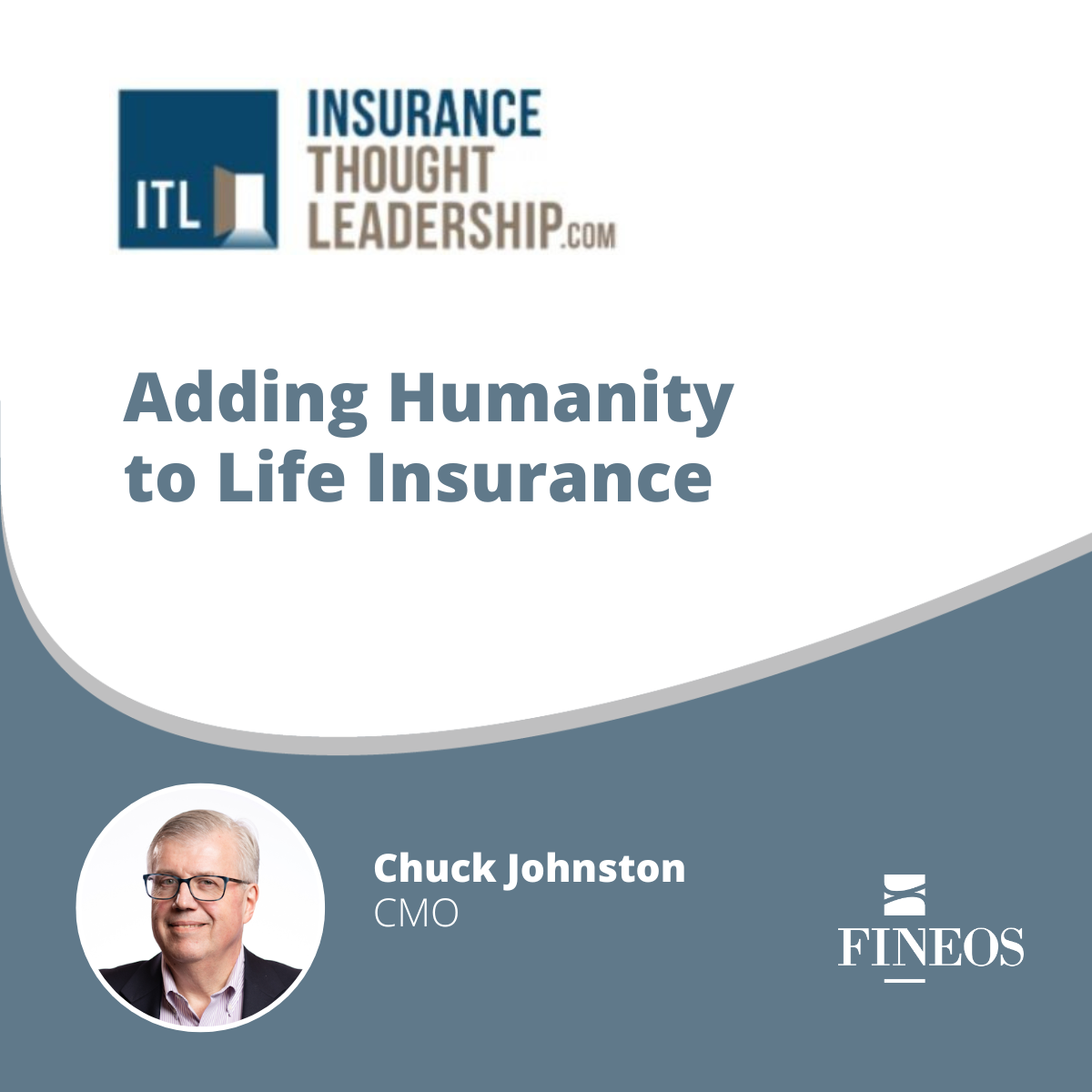Article appeared in The Irish Advantage January 2020
Many say there are no coincidences in life – great things evolve when all the right elements, perfect timing and team alignment around purpose and vision are in place.
Ambition and focus are at the core of FINEOS, an Irish success story with strong customer insights and market understanding combined with a drive for innovation, excellence and relentless pursuit of a singular purpose, vision and strategy.
Michael Kelly established the Dublin-based company in 1993, bootstrapping it from IT services to becoming a global market leading software company in the life, accident and health insurance industry. Back in 1993, Ireland was a long way off the fintech hotbed it has become today. At that time, the country was emerging from successive recessions, high unemployment and little or no venture or investor community to support software start-ups. Watch the movie The Commitments and you’ll get the picture.
From his mid to late 20’s, Kelly enjoyed a whirlwind international career with Australian core insurance software company, Paxus Corporation. He started in product development and within five years was European Regional Manager, living in Holland, helping to win new customers and implement life policy management systems with customers in 12 countries.
In early 1993, Paxus was merged into what has become CSC (recently rebranded to DXC). In July 1993, Kelly left to establish FINEOS (originally called MSC) as an IT services company, which he would use to bootstrap into becoming a core software vendor for life assurers. Over the past 15 years, FINEOS has grown to become a multinational global technology force with customers and staff in North America, Europe and Asia Pacific.
People at the heart of the FINEOS success story
The CEO strongly attributes success to the hard work of the FINEOS team and to the loyalty of its customers. “Over the years, we’ve kept true to our core purpose; to help our customers care for the people they serve through the delivery of superior insurance technology.” said Kelly.
“As a team, we seek opportunities to learn, innovate and help our clients (insurance carriers) to maintain pace with the fast-changing technology and regulatory landscape and to deliver the best service and care to their customers. Our business is about people, helping our clients to protect and care for their customers, that’s what we enjoy. Knowing we are giving it our best and making a difference is what’s important.”
Having recovered from the economic crisis, FINEOS undertook a market study in 2013 to identify growth opportunities beyond the claims management software product domain where it had grown market leadership. The study identified a clear need for a new breed core administration system, which would enable life, accident and health carriers to combine group and individual insurance on a single technology platform. This would enable carriers to manage both employer-based and individual-based protection insurance on the same system – something that hadn’t been effectively achieved in the past but the study identified this as a key need and growing trend for the future.
From 2014, the company began moving the FINEOS Claims product to the cloud, while also undertaking bold strides to begin building out the new product components in its core suite as ‘cloud only’ products. The new product suite would be known as FINEOS AdminSuite and would initially consist of six product components for claims, policy, billing, payments, provider and absence management. These components could be sold and implemented independently or together as single core solutions. Absence management was an emerging trend, where employee benefit carriers were managing employee absences and paid leave on behalf of employers. This trend rapidly accelerated, whereby it is now an essential and integral part of the employee benefits business in the US today.
In 2015, the company gained support from the CIO of one of its largest FINEOS Claims customers in the US to undertake a joint study to determine if they could partner to build the FINEOS AdminSuite for this carrier as the inaugural customer. The objective was for the carrier to get first mover market advantage but also ensure that FINEOS AdminSuite would be a standard system, enabling other carriers in the industry to also move to it. The study was a success and a contractual agreement was signed at the end of 2015. With this first customer for AdminSuite secured, FINEOS had all the ingredients needed and began making the huge investment of well over $US100m in the R&D work that would be required within the following four years to scale the product teams to build FINEOS AdminSuite.
Market research, combined with the support of their largest US customer, gave FINEOS the confidence to invest heavily and grasp the opportunity to become the dominant core systems force in group and individual life, accident and health insurance. All of the product components of FINEOS AdminSuite are running in live production today – FINEOS Absence went live in January 2018 and FINEOS Policy and FINEOS Billing in November 2018. However, the company has continued to scale its investment in product R&D to continually advance FINEOS AdminSuite and to make their FINEOS Platform a global industry standard for core processing, digital engagement and data insights for life, accident and health.
Power of agility
The success of FINEOS is built on a rich knowledge of the insurance industry and the advanced technology footing to address two key issues in the sector: the rapidly changing complexity of the business and the imperative to digitise the process. FINEOS AdminSuite is a new breed of technology platform that addresses the most challenging problems with a flexible and integrated approach. Built specifically and only for the life, accident and health market, FINEOS AdminSuite has a highly configurable product engine that enables insurance carriers to undertake rapid product portfolio expansion and market introduction.
The US represents 33% of the global market for FINEOS, which underscores the importance of addressing absence management there. “It’s a highly complex and regulatory-driven market and the FINEOS decision to fully embrace it early in the build-out of FINEOS AdminSuite is helping to drive market leadership in employee benefits,” said Kelly. “The power of FINEOS AdminSuite is the combination of its integrated products, configuration agility and our SaaS delivery model. Carriers are rushing to innovate and modernise their core systems while still having to invest to remain competitive and compliant with new regulation, so they need to get this right first time. We are in the right place, with the right industry platform at the right time to help them.”
Digitize the process – FINEOS Engage
“But it’s not enough to know which products to build – it’s essential to know how to build them to meet the future market needs and to take advantage of rapid advances in digital and data technologies,” said Kelly. “Most legacy core insurance systems are based on a model created 30, 40 or even 50 years ago, and are heavily laden with bottlenecks and manual processes. The FINEOS Platform is a SaaS platform, with the core software and digital user experience embracing a modern UI, industry business content together with standard APIs enabling third-party system integration. We are packaging all our digital system of engagement technologies up into an add-on service we call FINEOS Engage.”
Data and FINEOS Insight – Next piece of the innovation puzzle for the FINEOS Platform
Data is essential to the life, accident and health insurance industry. It enables a carrier to not only provide the products and services its customer needs but helps manage the operational side of the business to be efficient and deliver better customer outcomes and overall experience. With the data in FINEOS comes the opportunity to predict, see trends, automate and learn. A new add-on component software service of the FINEOS Platform will be the FINEOS Insight product. “I recently read that there are 2.5 quintillion bytes of data created each day. That’s staggering. FINEOS Insight is focused on delivering enhanced tools to manage and harness the data that’s relevant to our customers and turn that data into meaningful insights and automation,” said Kelly.
Investing in people who innovate
FINEOS currently has more than 700 staff, and the CEO believes the figure will be closer to 1,000 in a short time. “We are always looking for good people, as we believe the more you invest in people, the more rewards you will reap along the line,” he said.
“FINEOS people understand our business and seek the right innovations to make a real difference for our customers. We are all focused on the one industry of life, accident and health and we are pulling in the same direction. We are customer focused, team players and high achievers and our strong collaborative culture is our greatest strength. Our teams are engaged and have exciting opportunities to see the world should they wish to travel. We are one family here – a multinational company in every sense of the word, with offices around the world and lots of different nationalities working with us both at home and abroad.”
“Our key driver is to help carriers replace older style core systems with our standardised system and move away from over-customised varieties, which are unique to themselves and can carry their own host of issues,” he says. “These days insurance companies want one standard core system rather than a plethora of unique systems and technologies – so product standardisation was a very strategic decision for us. We build agile and configurable products for the market rather than customised solutions for individual customers like we used to do years ago,” Kelly concluded.
Enterprise Ireland, the trade and innovation agency, has been a key supporter of FINEOS over its 25-year history, and FINEOS has more than delivered on its promise of jobs, exports and inward investment, which Kelly outlined in his original business plan submitted at the end of 1993.


